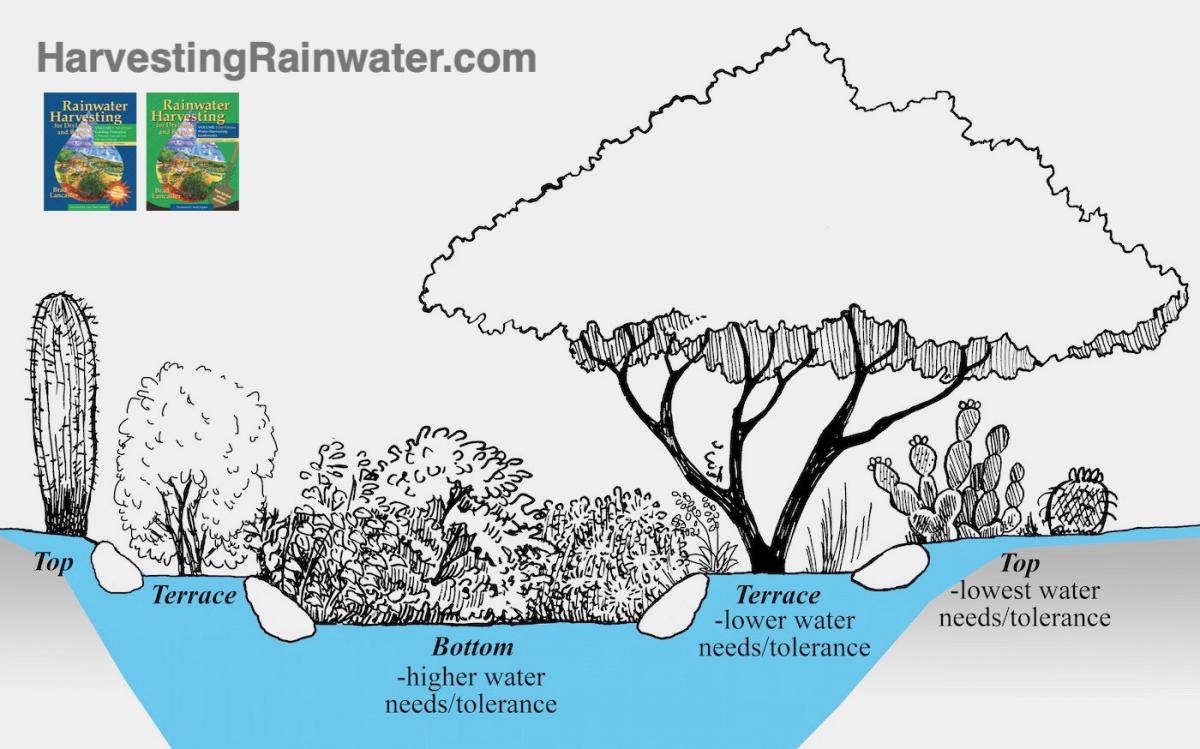Family: Lamiaceae
Common Names:
- English: desert lavender
- Spanish: salvia
- O'odham: Wiopal
Scientific Name: Condea emoryi
Rain Garden Zone: C. emoryi does well in the terrace Rain Garden Zone.

Reproduced with permission from "Rainwater Harvesting for Drylands and Beyond" by Brad Lancaster, HarvestingRainwater.com
Flowering Season: Spring
Characteristics: C. emoryi is a small, fragrant, evergreen shrub that can grow up to 6 feet in
height, with an upright form (1). The shrub has silver-colored stems and produced small, silver
leaves covered with small hairs (2). Flowers are violet in color (2).
Landscape Cultivation: Shrub is considered low water use, and semi-frost hardy down to 25°F
(1). The shrub can be found growing in desert washes and on hillsides (3), and prefers full sun
Ethnobotany:
Wildlife: Flowers attract pollinators and act as a year-round source of nectar (4).
Food: Seeds are eaten in Mexico and known by the name "chia" (5).
Medicinal: The Cahuilla people were known to create an infusion with the blossoms and
leaves to treat hemorrhages (6).
References:
1. Arizona Municipal Water Users Association
2. Southwest Desert Flora
3. SEINet
4. Ingram, Mrill; Buchmann, Steve; Nabhan, Gary. (1998). Gardening for Pollinators.
Arizona-Sonora Desert Museum Press.
5. Kearney, Thomas H., Robert H. Peebles, and collaborators. (1951). Arizona Flora.
University of California Press
6. Bean, Lowell John and Katherine Siva Saubel. (1972). Temalpakh: Cahuilla Indian
Knowledge and Usage of Plants. Malki Museum Press.
For more information on this species, see the Campus Arboretum species description page.

